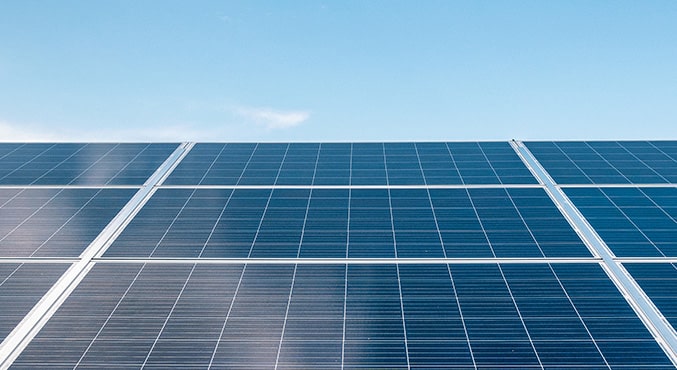
Protecting our future by protecting our planet
Addressing climate change takes big-picture thinking. We’re committed to helping healthcare run more sustainably by implementing practices that are scalable and eco-friendly. We also encourage our partners to do the same by offering solutions that help them reduce waste while saving on cost.
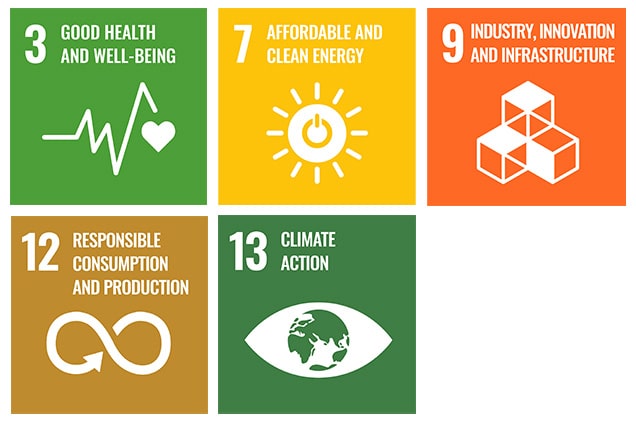
Creating sustainable solutions for our partners
We help health systems throughout their sustainability journey, listening to their challenges and problem-solving, together. We then create sustainable programs that meet our partners’ unique needs. The solutions we develop are designed to reduce waste while lowering costs.
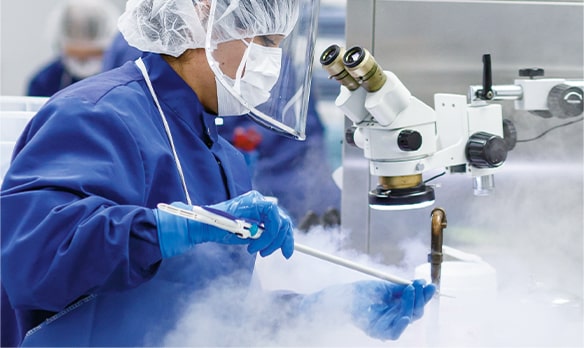
Medline ReNewal
We help our partners reduce waste by reprocessing their medical devices so that they may be used again. In 2021, Medline ReNewal took in 6,344,304 instruments to be reprocessed and diverted 1,095,793 pounds of waste from landfills, an amount equivalent to 39,137,130 water bottles.
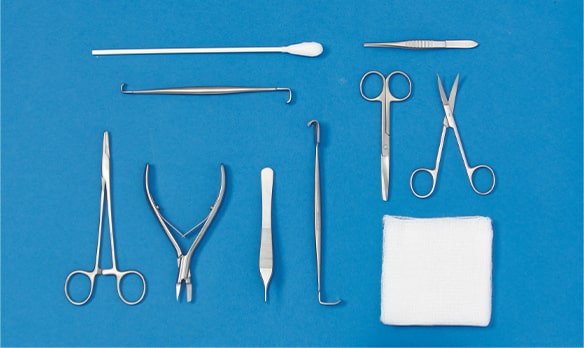
Centurion
Our Centurion recycling program provides customers with an eco-friendly option to recover premium surgical instruments from the waste stream, while reducing regulated medical waste costs. Since 2019, the program has diverted 104,057 pounds of instruments from landfills, an amount equivalent to 271,264 iPhones.
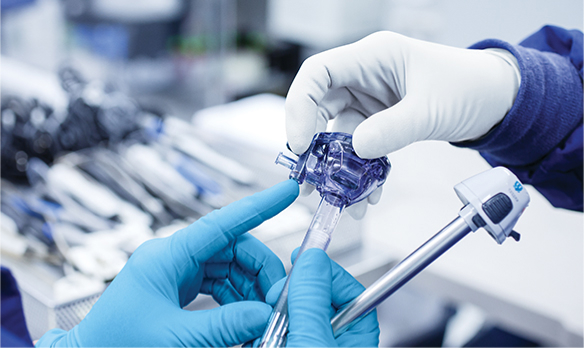
Gloves waste to energy
This program transforms exam gloves into clean, renewable energy. In 2021 we partnered with customers to transform 1,504 pounds of gloves into clean energy.
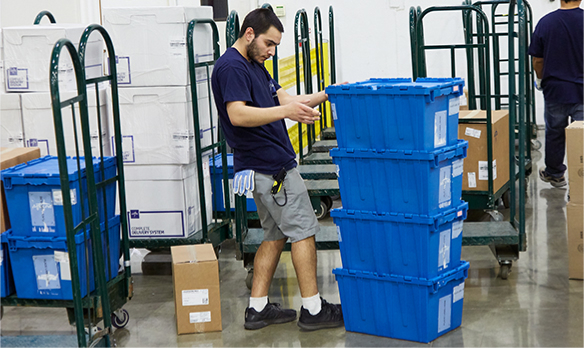
Tote exchange
Our tote exchange program delivers products in reusable totes instead of cardboard containers. It plays a significant role in reducing the amount of corrugated cardboard in our supply chain and is offered to our qualifying partners nationwide.
Reducing waste throughout our supply chain
Hospitals produce more than 5 million metric tons of waste each year.1 Conserving raw material and energy resources is key to reducing environmental impact. At Medline, we’re making progress by ensuring surplus products are put to good use, responsibly sourcing and producing more green products and innovating sustainable packaging solutions for our partners across the healthcare continuum.
Putting surplus product to good use
We donate our surplus product to clinics in need around the world. In 2021, we diverted 275 metric tons of waste from landfills by providing nonprofit organizations with unused supplies that fill a crucial gap for healthcare facilities in low-resource countries.
Reimagining packaging with the Sustainable Packaging Lab
Launched in 2020, Medline’s Sustainable Packaging Lab—a cross-functional team of R&D, sustainability, operations and design experts and engineers—works to reimagine the way we see packaging for a more sustainable future. Within a year of the lab’s creation, it was awarded a 2021 Sustainability, Environmental Achievement and Leadership (SEAL) award for its innovations. Here are a few of our packaging innovations that are reducing waste not just across our own supply chain, but our partners’ as well.
Cold chain shipping
Cold chain packaging ensures products reach their destination at a set temperature, which is more important now than ever. Our previous cold chain packaging underused space and generated unnecessary waste. After review by the Sustainable Packaging Lab, previous delivery, shipping and storage methods were scrapped, and a sustainable and efficient design was introduced.
- 100% recycled content—both the liner and outer box
- 100% recyclable
- 398,916 pounds of raw material saved per year
Chipboard pallet sheets
The way we store product in our facilities impacts the amount of product we house per branch, as well as our ability to deliver product on time. Our new chipboard pallet sheets serve as a thinner, more compact version of traditional corrugate dividers. The sheets not only save square footage and allow our team to better optimize warehouse space, but they are the right choice for the environment, too.
- Made from 54% post-consumer recycled content
- Savings of 46,000 pounds of paper
- Optimize storage space
Green products—setting the standard to lighten our environmental footprint
Introduced in 2020, our Green Product Portfolio brings our commitment to sustainable sourcing to life and makes the search for sustainable products simple. To be added to our Green Product Portfolio, products must meet our strict green product standards—informed by state laws and regulations and guided by sustainability best practices, such as Kaiser Permanente’s Environmentally Preferable Purchasing Standards, the Federal Trade Commission’s FTC Green Guides and Practice Greenhealth.
Investing in renewable energy
Since 2016 we’ve invested $34.5 million in solar energy globally. With two new solar installations initiated in 2021 and slated to go into production in 2022, our portfolio now includes 2,735,595 square feet of solar rooftop space with over 60,000 solar panels.
Our solar energy portfolio at-a-glance
| Location | Total solar square feet | Solar panel count | Investment (USD) | Power capacity (MW) | Jan–Dec 2021 kWh production | Estimated annual energy offset |
|---|---|---|---|---|---|---|
| Aisai, Japan | 50,000 | 1,665 | $868k | 0.40 | 497,912 | 48% |
| Auburndale, Florida | 250,000 | 5,077 | $2.773M | 1.65 | 2,239,822 | 59% |
| Kleve, Germany | 130,000 | 3,770 | $1.2M | 1 | 967,503 | 68% |
| Montgomery, New York | 715,000 | 19,203 | $11.5M | 7.39 | NA, system operational in 2022 | TBD, system operational in 2022 |
| Northfield, Illinois | 111,500 | 2,754 | $1.69M | 1.02 | 1,095,681 | 20% |
| Rialto, California | 180,000 | 3,152 | $1.882M | 1.12 | 1,767,222 | 34% |
| Sydney, Australia | 29,095 | 1,344 | $406k | 0.55 | 583,460 | 35% |
| Tracy, California | 470,000 | 7,389 | $4.14M | 2.45 | 3,864,187 | 59% |
| Uxbridge, Massachusetts | 800,000 | 16,219 | $10.05M | 6.66 | NA, system operational in 2022 | TBD, system operational in 2022 |
| Total | 2,735,595 | 60,573 | $34,609,000 | 22 | 11,015,787 |
Building with sustainability in mind
We build and operate our facilities in sustainable ways. As of 2022, 98% of our distribution centers in the U.S. are LEED certified or pending certification, representing over 19.2 million square feet out of a total 19.7 million square feet.
We also have 10 locations that are certified according to ISO 14001, a set of global environmental standards set by the International Organization for Standardization (ISO). ISO 14001 lays out the necessary criteria for an environmental management system (EMS) and outlines the steps a company or organization should follow to set up an effective EMS.
Conserving energy and other resources is critical to curbing climate change and an integral part of achieving ISO 14001 certification.
We’re meeting ISO standards by:
- Installing LED lighting in production and warehouse areas
- Identifying and executing alternative means of waste disposal
- Updating our equipment and processes to use less water
- Making our equipment and processes more efficient
ISO 14001 certifications at Medline
- Northfield, Illinois
- Dynacor—Mundelein, Illinois
- Sterile Procedure Tray—Waukegan, Illinois
- Readycare—Waukegan, Illinois
- Lithia Springs, Georgia
- Chateaubriant, France
- Bánovce nad Bebravou, Slovakia
- Madrid, Spain
- Kleve, Germany
- Florence, Italy
Recycling by the numbers
Since 2008, we’ve tracked the amount of plastic and corrugate recycled at our distribution centers. In 2021, we recycled 100 metric tons of plastic wrap and 14,644 metric tons of corrugate.
Making transportation more sustainable
Piloting fully electric semitrucks
As part of a pilot program with Volvo Trucks, MedTrans, Medline’s private truck fleet, is using a fully electric semitruck to make deliveries to hospital systems in Southern California. The Volvo VNR Electric truck was developed as part of the Volvo LIGHTS (Low Impact Green Heavy Transport Solutions) project, a collaboration between Volvo Trucks and 12 other organizations to develop a blueprint to successfully introduce battery-electric trucks and equipment into the market at scale.
MedTrans has been working with Volvo Trucks for the past two years on its VNR Electric Class 8 heavy-duty truck. Most recently, MedTrans began using the VNR Electric as one of five pilot vehicles to make regular product deliveries. Through the pilot, MedTrans and Volvo Trucks closely monitor truck diagnostics and operating metrics, including battery life, driving range and charge station requirements. MedTrans then regularly provides operating data back to Volvo Trucks with the goal of making these trucks as efficient, effective and viable as possible.
Improving fleet fuel economy
EPA SmartWay is a partnership between the Environmental Protection Agency (EPA) and freight industry that provides guidelines and tools for improving fuel efficiency and environmental performance. As an EPA SmartWay partner, we’re reducing our carbon footprint on the road by operating vehicles more fuel efficiently, investing in technology to monitor driving performance and streamlining deliveries and transportation services whenever possible. Our private fleet delivers over 96% of prime vendor hospital sales and over 75% of all Medline sales. The remaining 25% of our sales are distributed by UPS, FedEx and LTL carriers.
Measuring our emissions
Transparency—especially in the realm of environmental impact—is important.
We measure our carbon emissions in North America and Europe through an annual greenhouse gas (GHG) inventory. We use the data we gather to develop strategies to better manage our footprint.
There are two ways to evaluate progress against emission reductions: absolute emissions and emission intensity. Absolute emissions refer to the total quantity of greenhouse gas emissions being emitted, whereas emission intensity compares the amount of emissions to some unit of economic output. Both measures can be used to help organizations gauge the success of their emission reduction management strategies over time.
Our absolute emissions in 2020
Our GHG inventory measures our emissions in North America and Europe within three scopes. Most of our emissions come from upstream transportation and electric power.
Medline North America and Europe Combined GHG emissions FY2020*
(measured in metric tons CO2e**)
*Greenhouse gas emissions data represents the 2020 calendar year.
**CO2e stands for carbon dioxide equivalent and is a standard unit to measure carbon footprint. It is used to compare the emissions from various greenhouse gases based upon their global warming potential.
Our emission intensity over time
Medline has consistently calculated its North American and European Scope 1 and Scope 2 greenhouse gas emissions since 2013. Since then, we’ve significantly grown year over year, increasing production, employee headcount and revenue, among other things.
With this growth, we have increased operational efficiency over the last 9 years by integrating LEED building practices, investing heavily in renewable energy and maintaining several ISO certified facilities. These operational changes have allowed for our revenue, square footage and employee count to increase at a pace much faster than our emissions output.
While our absolute greenhouse gas emissions output increased from 2019 to 2020, emissions per dollar of revenue, square foot and employee have been reduced 40%, 36% and 42% respectively between 2013 and 2020. The below graph shows a consistent downward trend of emissions versus each metric, including revenue.
Looking ahead
As Medline transitions a mature CSR function into a holistic Environmental, Social and Governance program, the management of our greenhouse gas emissions is a top priority.
Currently, we are working to set emission reduction targets that align with the Science Based Target (SBTI) standards. For context, SBTI standards guide organizations in aligning to the goals outlined in the Paris Agreement, which in 2015 provided a global framework to avoid dangerous climate change by limiting global warming to well below 2°C and pursuing efforts to limit it to 1.5°C. Medline will need to demonstrate that the targets are in line with the Paris Agreement by using the latest methods and tools approved by SBTI. We plan to have ambitious emission reduction scenarios both near- and long-term, in 2030 and 2050 respectively.
See our sustainability efforts in action
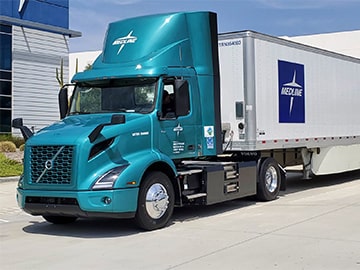
MedTrans uses electric semitruck to deliver products in Southern California
Medline’s private truck fleet partners with Volvo Trucks to reduce environmental impact.
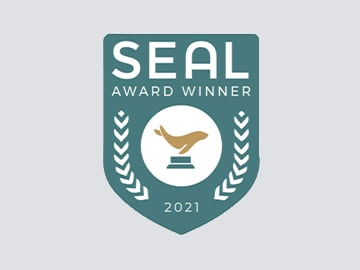
Medline receives 2021 SEAL Award for Environmental Initiatives
In its first year, Medline’s Sustainable Packaging Lab reduced waste by 455,000 pounds.
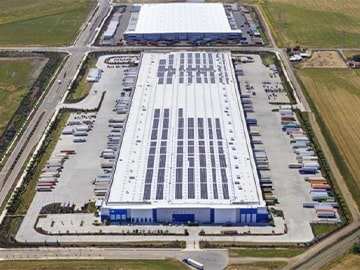
Medline’s solar portfolio to triple in size by Q1 of 2022
Medline works to build a future where healthcare operates more sustainably.
References:
1. https://practicegreenhealth.org/topics/waste/waste-0